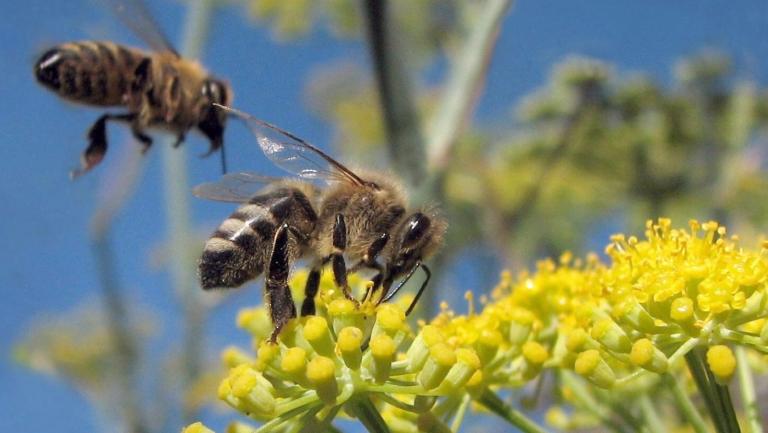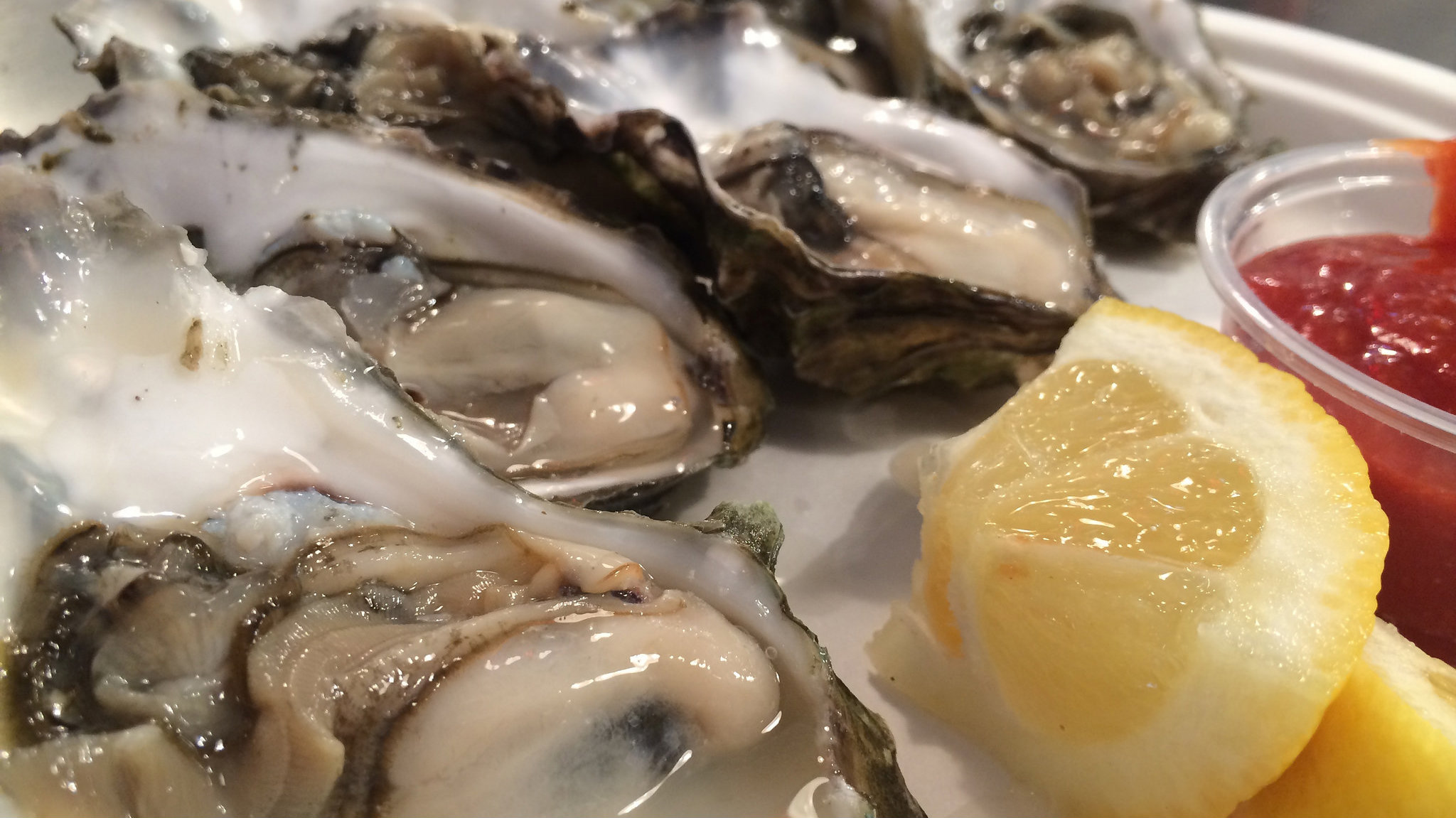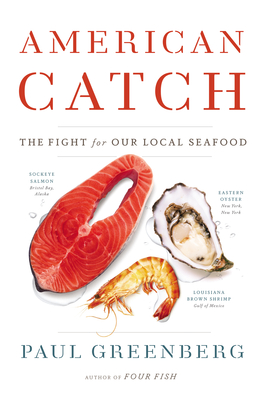When conscientious omnivores swept the U.S. food scene with their locavore antics, the focus was largely on the land. But if local beets and beef are key for our farming system, surely our neighborhood oysters can do as much or more for our coasts, health, and appetites. That is, if we can learn to love them: While putting away more than 100 pounds of red meat and poultry a year, the average American only manages to swallow about 15 pounds of seafood. It wasn’t always this way, says writer and proficient pescavore Paul Greenberg. Greenberg is the author of the acclaimed Four Fish, a look at four key food fish — tuna, salmon, cod, and seabass — as well as a new book, American Catch, out this week from Penguin Press.
“A lot of people have had really bad fish experiences — and if you have a bad fish experience, chances are you’re not going to eat fish again,” Greenberg told Grist. In American Catch, Greenberg sets out to wake Americans up to the incredible wealth of local seafood that we export, undervalue, undermine, pollute, or otherwise ignore, while chowing down on tasteless tilapia or all-you-can-eat shrimp from farms in Asia. Something like 86 percent of America’s seafood intake is imported (most of that is farmed), while we send away most of our own wild-caught fish. For a country with 94,000 miles of coast, that’s literally crazy.
Greenberg builds his argument around a trio of American seafoods — New York’s bygone oysters, Louisiana’s at-risk shrimp, and Alaska’s pristine sockeye salmon — as the ghosts of seafood past, present, and future come to reckon with us seafood Scrooges. Who knows? Maybe tomorrow we’ll all feast snout-to-tail on red snapper.
Q. How did you choose these three seafoods?
A. I chose these three creatures because each had an interesting struggle — and in a way, each one represents a different period in American seafood history.
The Eastern oyster, in the past, fought a war with humanity and kind of lost.
With shrimp, we’re still battling it out to save the Louisiana marshlands and other wetlands around the country that are the rearing grounds of those creatures. Plus, you can’t ignore shrimp, because it’s just the most consumed seafood by far in the United States. We eat more shrimp than almost the next two most popular seafoods combined (salmon and canned tuna), so that’s a no-brainer.
And then salmon: Alaska, to me, is really the future of American seafood. It by far produces more seafood than any other state, probably by an order of magnitude. And in a way, Alaska is exactly where New York was 200 or 300 years ago. If you fly over the salmon grounds of Alaska, it’s just this incredibly untrammeled, beautiful network of rivers and estuaries. It’s almost like stepping into a time machine.
Q. Why appeal to people through their tastebuds?
A. It’s funny — do you know Carl Safina? We’re friends and I’m a fellow with the Safina Center. He’s always like, ‘Man, the reason I started writing about the ocean is because everybody was thinking about it like food and I wanted to talk about it like wildlife.’ Meanwhile, 15 years later, when I came along, I felt like everyone was talking about the sea like wildlife but people really only wanted to talk about it in terms of food.
There was a Pew survey a couple of years ago that asked people what makes them feel connected to the ocean, and most people said ‘food.’ So to some degree I feel like that’s the natural way in. If there is a natural pathway, it pays to follow it.
Q. When telling the histories of these American seafoods, do you think about it in terms of shifting baseline syndrome? (This is the idea that we adjust very quickly to new definitions of normal.) For example, while it was once normal to eat oysters from the Hudson, now many people would find it unthinkable.
A. You know, shifting baseline and shifting taste are really the teeth of the book. Right now I’m working on an op-ed for the Times (read here) and it suddenly occurred to me that, really, what we’re talking about is a taste shift from oysters to shrimp. If you look at per capita consumption of oysters 100 years ago, it was pretty similar to our per capita of shrimp today. And that’s pretty telling, because that means 100 years ago everybody was eating from their own estuary, or an estuary nearby. And now, everybody is eating from an estuary 8,000 or 10,000 miles away. Talk about a shifting baseline.
Q. And what about the Clean Water Act — do you think it is a kind of cure-all for some of our seafood ills?
A. The Clean Water Act has been with us for a number of years. I wrote a piece a few years ago for Yale Environment 360 about the law, at 40, having a midlife crisis. It’s not like the law is going to pick up and run away with a law half its age and drive a red sports car. But it’s an old law, and it’s got some clunkers in it.
I decided to really focus on the act because so much of the archetypal environmental legislation of the ‘60s and probably ‘70s is under fire right now from Republicans, and even some conservative Democrats. Carl Safina was saying to me the other day, ‘The reason everyone wants to dismantle the Clean Water Act now is because the water’s clean.’ People don’t remember when the water was literally catching fire, toxic, [and] inhospitable to shellfish.
That’s why I see local seafood, especially shellfish aquaculture, as a way of putting an economic tether into the Clean Water Act. In other words, it says, ‘We must have this law because we have real economic interests invested in the perpetuation of this law.’ And I think if we can tether other aspects of the seafood economy to that, it would be good for the nation.
Q. Do you have an internal struggle between Pollyanna and pessimism?
A. I don’t think it’s Pollyanna-ish to celebrate the rebirth of the American shellfish industry and the cleaning of our water. That’s truly happening and truly can continue to happen.
On the pessimistic side of things, climate change is very real; we’re going to have a real shifting of the composition of the species that we live off of from the sea; aquaculture is undoubtedly going to have to play a larger role. Although I didn’t talk about finfish aquaculture in the book, because I felt like I’d covered that material in Four Fish. But it’s clear that we’re going to have to make some major changes to the way we live with the sea — the sea is going to be even higher, we’re going to have less land, we’re going to lose more salt marsh — it’s just the way it’s going to be, and we’ll have to adapt.
Q. Is there a good shorthand way to be a conscientious consumer?
A. People always want to know, ‘how should I eat?’ I was trying to figure out if there was a Michael Pollan-esque line like ‘eat food, not too much, mostly plants.’ The best I could come up with was: ‘Eat American seafood, a much wider variety than we currently do, mostly filter feeders.’
It’s very clunky! But that’s to me what we should do. Let’s get off this four-fish bandwagon, which includes a lot of imported products, let’s focus on a really broad variety of species, let’s eat bycatch instead of just wasting it, widen our palate. But at the base of it all, let’s have really great shellfish aquaculture, including seaweed. Farmed together, shellfish and kelp and things like that would just do tremendous amounts of good for the water quality. They also create habitats for finfish. So I would love to see that as a restorative way of eating from the ocean, where we are eating things that actually improve the condition of our water supply.





